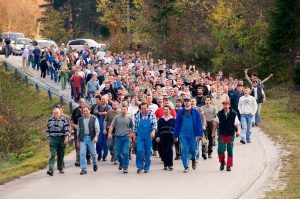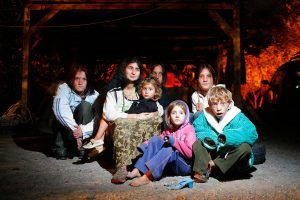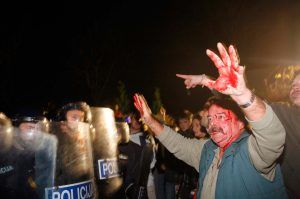Forced Eviction of Roma Family Strojan
Related Case Studies
The Strojans, an extended family of 31 Roma, 14 of them children, were forced to abandon their land when a mob from Ambrus and other nearby villages surrounded their homes, threatening to kill them and demanding their eviction. While the police kept the crowd back, Slovenian government officials negotiated the family's removal to a former army barracks 50 kilometers away.
This action was apparently undertaken as a result of a conflict arising from an incident occurring around one week previously, in which a non-Romani man was reportedly attacked by inhabitants of the settlement. He thereafter required emergency health treatment. Following the attack, on 23 October, non-Romani villagers met and openly called for violence against local Roma. Police were reportedly present at the meeting, which was broadcast on national television, but failed to intervene.
Following the meeting, the entire Romani community fled from their homes into the forest. They spent several nights hiding in the forest in fear of retribution of non-Roma, who threatened the local Roma with a range of actions, including death.
On 28 October, the local Roma attempted to return to their homes under police protection. However, approximately 300 non-Roma local residents objected to the return of the Roma and, under threat of violence, demanded that authorities resettle the Romani community living there to the more suitable location “due to security and ecological reasons”. Local non-Roma reportedly maintained that “Roma would never return to the area”. Due to the credible and evident threat of mob violence, Slovene police blocked access to Romani settlement and special police units were brought in.
On the evening of 28 October, allegedly “all sides” reached an agreement that Roma would be temporary resettled to the abandoned Postojna refugee centre. In the Postojna centre, there was running water and sanitary facilities, but no warm water and no heating.
Since the Roma family attempted to return to their home, the authorities demolished their settlement. Part of the family still attempted to return to their land, staying in tents. On 25 December 2006 the then President of Slovenia Janez Drnovsek, opposing to the approach of the then government and to the anti-Roma atmosphere acted in a way to deliver two mobile home containers to the family on a Christmas day, but his convoy was stopped and denied access to Roma settlement by the mob of Ambrus villagers.
The Roma family was after that removed to the building within the Roje military facilities near Ljubljana, owned by the state. Later, in 2007, the legal experts assisted to Roma family in negotations with the government to gain ownership in part of the building near Ljubljana in which they were forcefully settled after the eviction and destroyment of their settlement in Ambrus.
European Roma Rights Center, 6.11.2006, http://www.errc.org/cikk.php?cikk=2653, Date of access: 19.10.2011
New York Times, 6.11.2006, http://www.nytimes.com/2006/11/07/world/europe/07iht-gypsy.3427824.html, Date of access: 19.10.2011
Photo: Borut Peterlin, http://www.borutpeterlin.com/#/STORIES/2007%20Strojan%20Roma%20family/1/thumbs, Date of access: 19.10.2011



